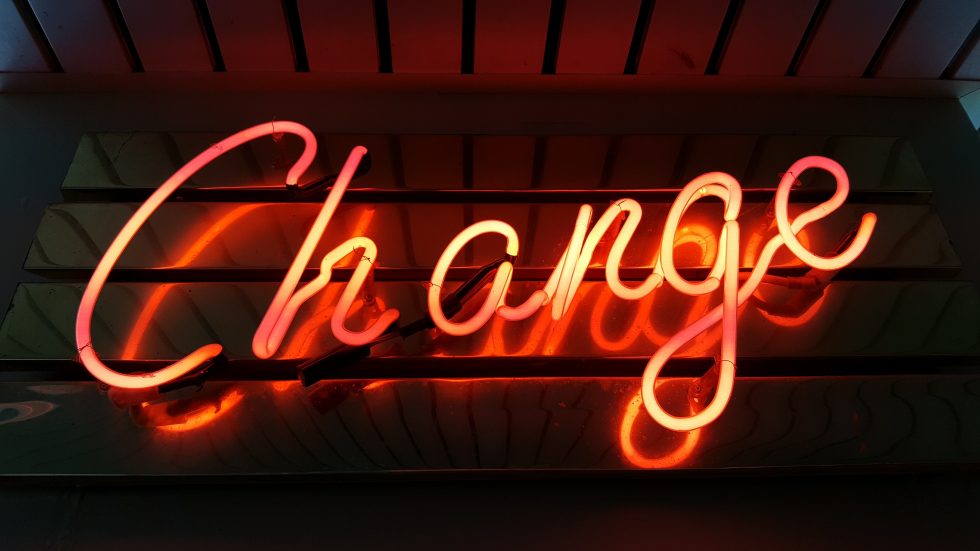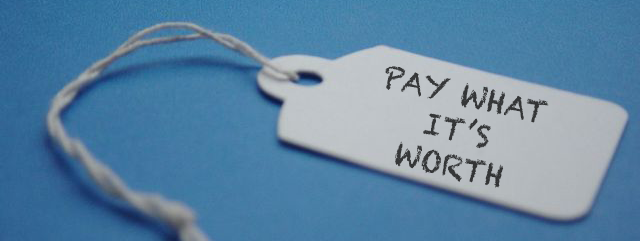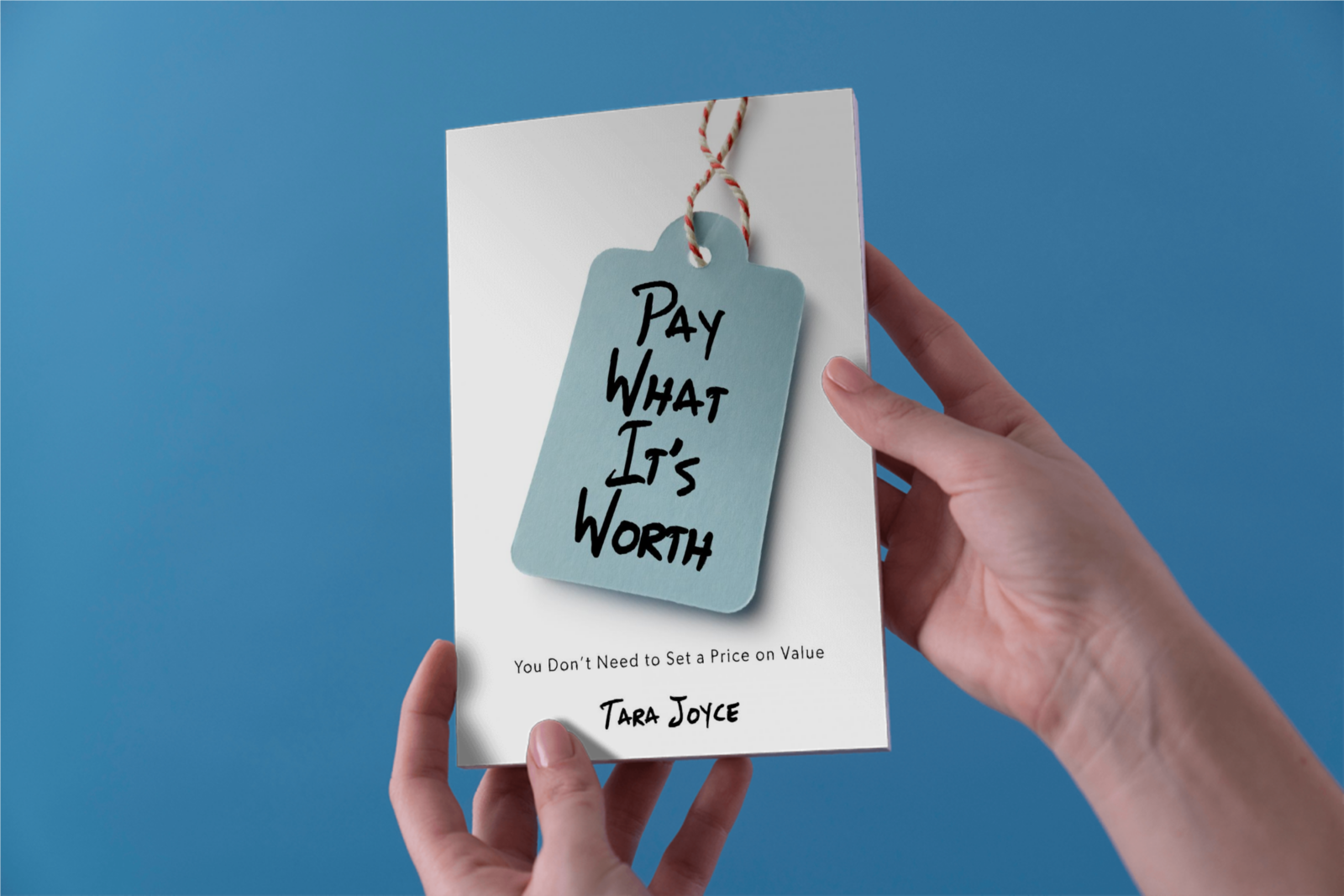
by Tara Joyce | Mar 1, 2022 | Pay What It's Worth Pricing
Since Dec 2020, new price tags can be found throughout Amsterdam that include the true and complete costs of the goods being produced and purchased. Amsterdam is becoming a “Doughnut City,” creating an economic reality where businesses and their customers are accountable to the true costs of goods and services being created and purchased.
Similar to the Pay What It’s Worth pricing system, Amsterdam’s approach and the “Doughnut Economics” they’re embracing are examples of people re-examining dated economic theories to help usher us into a more socially empowered 21st century.
Explore the principles behind “Doughnut Economics” more in this Time article: https://time.com/5930093/amsterdam-doughnut-economics

by Tara Joyce | Aug 8, 2014 | Pay What It's Worth Pricing

Have you ever considered why you choose to set prices? For most of us, we set prices because we have been taught, and we believe, that if we do not, our customer will not pay fairly for the item of value we are selling. This feeling, of others not being willing to pay, is based upon the assumption of scarcity that permeates, and is the foundation of, our modern economy and economic theory. >> Read the rest of the article on Local Organics Food Co-ops Network‘s blog.
As my new book catalyzes me to be more public about my business model and pricing method, I’m receiving strong interest and support from individuals working in social responsible and/or sustainable businesses. I’m proud to share the above article with Ontario’s local and organic food co-op network.

by Tara Joyce | Jul 30, 2014 | Cultural Creativity, Pay What It's Worth Pricing

Economic theory is based on the assumption of scarcity – why is that? Aren’t we, collectively, always creating and printing more money? It’s not a limited resource, so why do we use it like it is?
We can’t run out of it. It’s not clean water. Or pandas. We make it, and we can always make more of it. So why should we believe and act like it’s going to run out?
I make a conscious choice to live in a world of abundance, not scarcity. And that includes money.
In Paying What It’s Worth for the value you receive, you shift the traditional supply curve (based on scarcity) to one based on abundance. In not setting prices, you remove the false ceiling that’s been placed on your value, maximizing your return potential, and removing any self-imposed limits to it.
So why not forget that economy of scarcity story? Its plot is full of holes.
photo credit: Paul Nicholson

by Tara Joyce | Jul 9, 2014 | My Journey | What's On My Mind, Pay What It's Worth Pricing

After five years of experimenting with not setting prices, in Pay What It’s Worth: Building Your Sustainable System for Not Setting Prices, I introduce this pricing innovation and share integral strategies for creating a balanced exchange experience, empowering both your customer and you to fairly value what’s being exchanged.

explore how an open pricing system with
Accountability. Norms. Disclosure.
creates and sustains a relationship of
Mutual benefit. Exchange. Connection.
between customer and creator
shaping an economy of integrity for your business to be valued in and grow from
Learn more and read the book

Pay What It’s Worth is self-published by Tara Joyce under Elastic Mind Press. Currently you can purchase a PDF version of the book, and pre-order your print, kindle or EPUB version.

by Tara Joyce | May 7, 2014 | My Journey | What's On My Mind, Pay What It's Worth Pricing

I was all set to release my first book on Pay What It’s Worth pricing last week, a book I’ve been writing in one form or another for, I don’t know… six years or so, but life got in the way, as it does.
Life, it seems, had a bunch to teach me, and specifically about PWIW.
Life had me thinking my book was a terrible lie. And then it had me thinking that there was so much missing from it.
See, that’s my problem with Pay What It’s Worth… always has been. There’s just too much to say. And it keeps growing. And I can’t get it down fast enough before it teaches me something new.
A New Truth
I’ve always felt very strongly about the communication around Pay What It’s Worth, in that I feel strongly about the importance of how I communicate what I am asking my customers to do when I allow them to set the price they pay.
It is my feeling that to be happy in the exchange both participants need to feel empowered, and that means holding both buyer and seller responsible for their contributions to the exchange.
Last week, as a seller, it became very clear that the biggest part of my job (beyond creating value) is to guide my customers towards a fair exchange with me — to support them in being responsible with their giving and in their relationship with me.
We all have our money stuff, and in choosing a system where I allow my customers to determine my value, I am entering into a relationship with their money stuff too.
A New Block to Build From
In asking my customers to pay what it’s worth, I’m asking them to experience the value they are receiving and to give fair monetary value in return for it.
And while that sounds simple in words, it’s terribly difficult in practice. And what I haven’t been totally responsible for, I can see now as a seller (and as a writer on the topic), is the truth of this.
It’s fucking hard to stay balanced and in integrity with money. It’s fucking hard to pay what it’s worth.
The truth is, if I’m asking people and all their money stuff to value me fairly, I had better provide ample support and understanding. Because what I am really asking is for them to be in a balanced relationship with me.
Is it fair of me to expect that they know what this looks or feels like? Especially in a “business” relationship?
Support for Giving Freely
Our relationship is not one where the customer gets to pay what they want. In offering that, I’d be creating a relationship where they’re free to put their money stuff on me, and I’m free to put my money stuff on them.
The intention for our exchange is empowerment and wealth creation. It’s not about want, it’s about meeting needs and exchanging fair value.
If I want this intention of need and fair value to stay true throughout my exchanges, I need to ensure all my guideposts indicate this. In my offering of paying what it’s worth, I need to ensure that I’m not creating space for my customers to default to paying what they want.
It’s important I protect myself from how easy it is, when our money stuff arrives, to make it about want.
As a seller it’s imperative I continue to do what I can to guide my customers towards being responsible in how they value me. This, it seems, is my biggest responsibility in our exchange outside of providing great value.
If I sincerely want our exchange to be about what we both can give, I need to acknowledge how hard that can be to act on. Only in my acceptance of this can I help my customers to be responsible to it.
photo credit: Kaytee Riek










